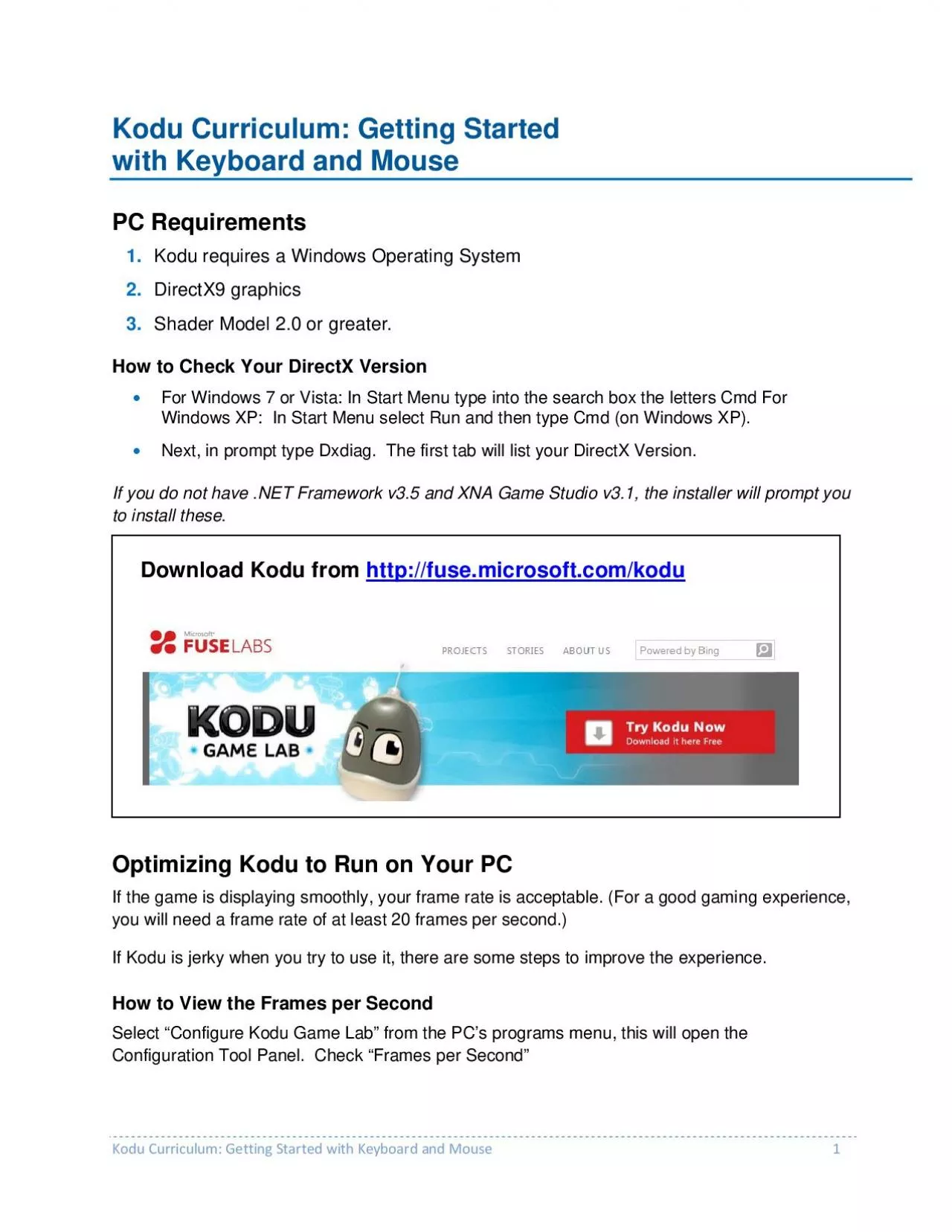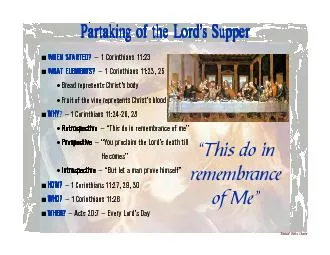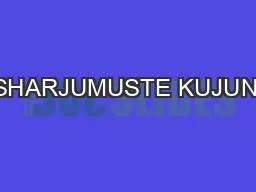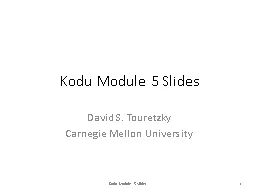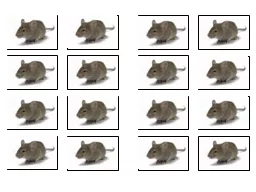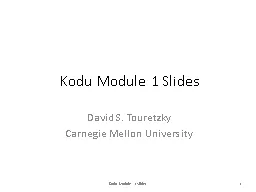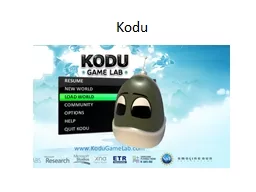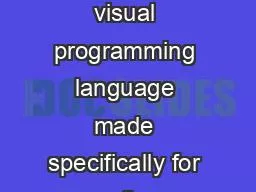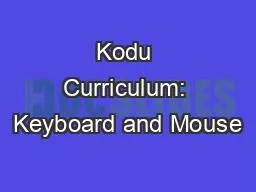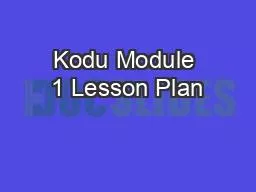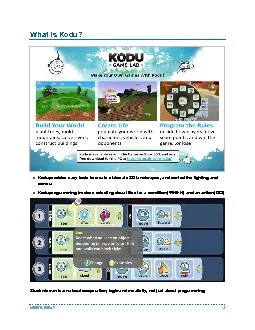PDF-Kodu Curriculum Getting Started with Keyboardand Mouse
Author : priscilla | Published Date : 2021-06-26
Kodu CurriculumGetting Started withKeyboardand Mouse PC Requirements Kodu requires a Windows Operating SystemDirectX9 graphicsShader Model 20 or greater How to Check
Presentation Embed Code
Download Presentation
Download Presentation The PPT/PDF document "Kodu Curriculum Getting Started with Key..." is the property of its rightful owner. Permission is granted to download and print the materials on this website for personal, non-commercial use only, and to display it on your personal computer provided you do not modify the materials and that you retain all copyright notices contained in the materials. By downloading content from our website, you accept the terms of this agreement.
Kodu Curriculum Getting Started with Keyboardand Mouse: Transcript
Download Rules Of Document
"Kodu Curriculum Getting Started with Keyboardand Mouse"The content belongs to its owner. You may download and print it for personal use, without modification, and keep all copyright notices. By downloading, you agree to these terms.
Related Documents

